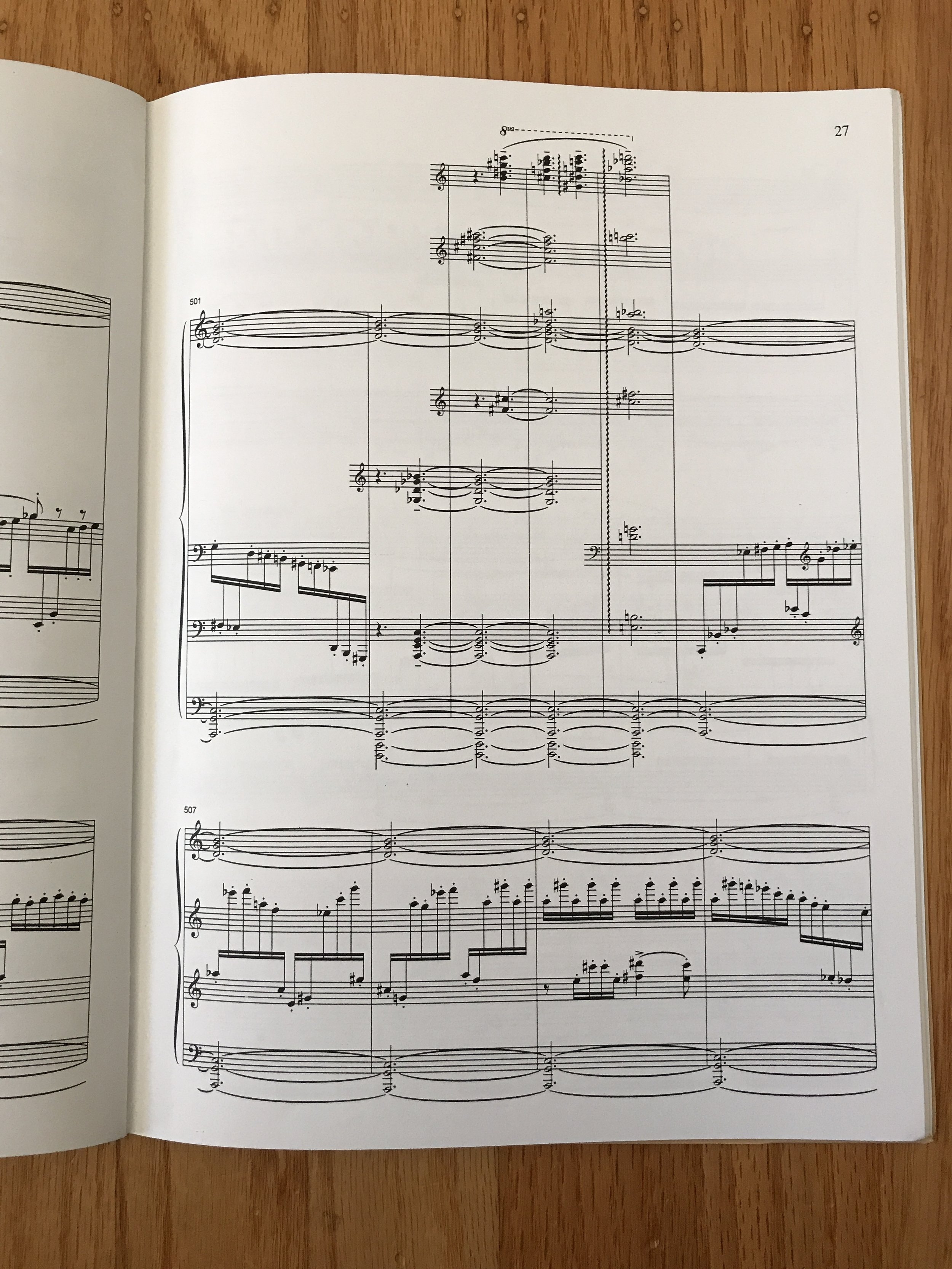some short and extremely scattered thoughts on Thomas Adès
- opinion has always vacillated on his music but have generally found it to be dazzling and clever and attractive and indeed fun to play
- (playing Life Story right now and enjoying it quite a bit, so let that be a disclaimer that I'm not coming from the place of being a "hater")
- however, do feel like his music attracts a large number of fuccbois(tm) especially of the pretentious composition student type
- is it the wunderkind thing?
- is it the "complexity"/"precision" part? that ties into the "dazzling" effect of his music? (see similar influence of Ravel/Stravinsky on 14-year-olds?)
- something about being a juggernaut of white male refinement and erudition?
- and his music is erudite but, in much of my getting to know it, not much else... like there's plenty to like but I find not much to love
- friend of mine mentioned that he is a younger composer working rather solidly in the Classical Tradition and that is inspiring for people to uphold the status quo etc. also true.
- some of the instrumental works I find particularly hollow: Traced Overhead, Arcadiana, Living Toys
- Traced Overhead is florid and proliferate and precise and yet the impression, often, is so indistinct. also as a native English-speaker, marking "Quasi allontanandosi" is... well...
- perhaps the *most* over-notated piece of Adès's I know.. there are passages where I do feel markings are superfluous (while in many other pieces I see why the specificity is at least welcome).
- Arcadiana is becoming something of a staple and I think it's fun but it rings hollow to me (in comparison to something like, say, ainsi la nuit or Black Angels). the contrast of "O Albion" is so bald as to feel rather dialed in, even sentimental ("oh, here's the *emotional part*"!). there's no nuance in any emotionality the piece does have; I don't feel that any of the movements really shed meaningful light on any of the others (which, with a movement like O Albion so conspicuously/ostentatiously protruding, might have been nice).
- in light of the rather charming program note for Living Toys, the piece has never registered to me as anything more than an illustration... there's a naïveté there that some might find endearing but it strikes me as v hackneyed
- Chamber Symphony and Asyla, in my memory of them, felt similarly forgettable, even.
- Traced Overhead is florid and proliferate and precise and yet the impression, often, is so indistinct. also as a native English-speaker, marking "Quasi allontanandosi" is... well...
- I like Life Story quite a bit for its text and I really do feel like the performer can "do something with it", i.e. there's something in it to love and that musicians can personalize and that is at best edifying for others to behold. I don't get that with a lot of his other music, which seems to me so dispassionate it in its expression and so much about execution of these fussy directions in pursuit of momentarily impressive effects ("just do what I tell you and people will love it/you") rather than any "necessary" utterance. need music do anything more than dazzle? I guess not, but it's often mistaken (and sold) as this whole "genius" THING.
- but also even with Life Story it's done as this nasty joke and I think there's a real melancholy in it that people kind of ignore. audiences often laugh at the end and I'd be curious to do/see a version that is more... devastating? rather than biting. otherwise the rest of the goddamn piece, and its lamentations about solipsism and loneliness and malaise, isn't worth hearing.
- it's this outward-facing music clearly assembled of fine materials by an assured and erudite hand. and yet so much just doesn't stick. like he knows (and probably loves) music and I'm fascinated by his tastes (anyone who can get into Couperin and Depeche Mode is a friend of mine), and have learned much from the things he has avowed to have learned from. wish I could feel any of his love for music through his own music.

















